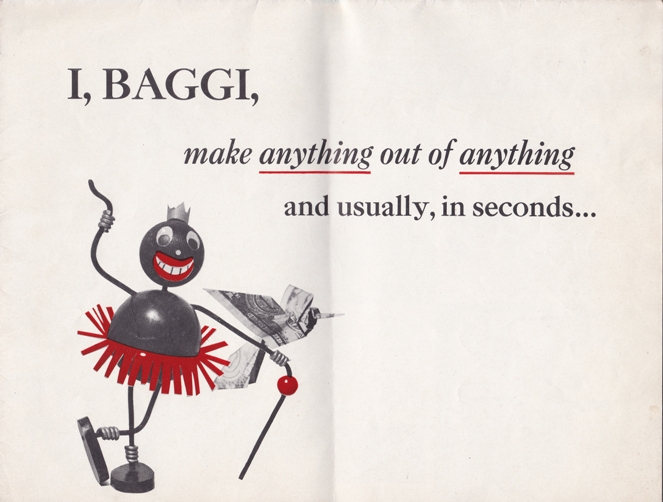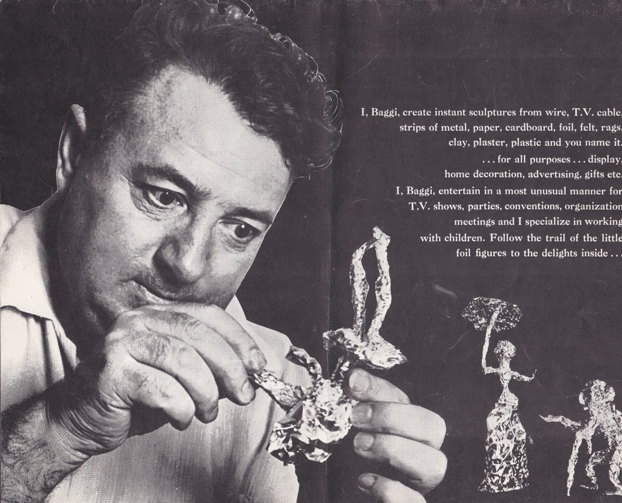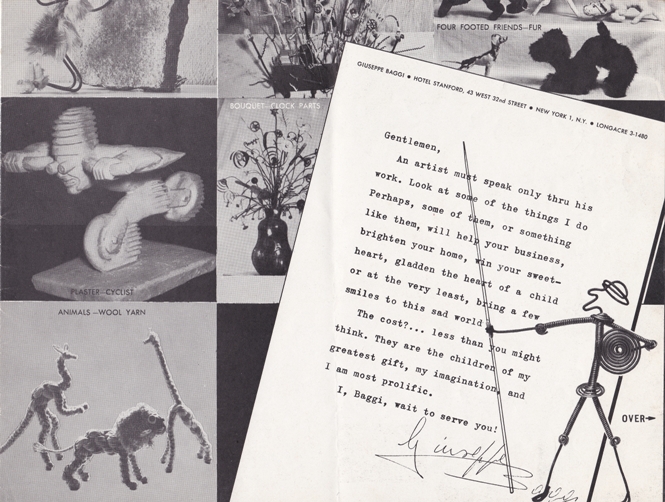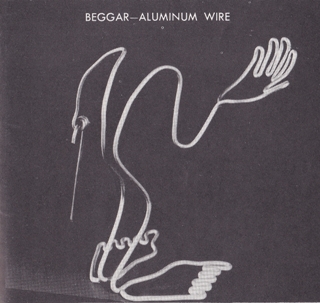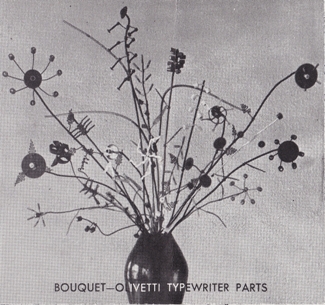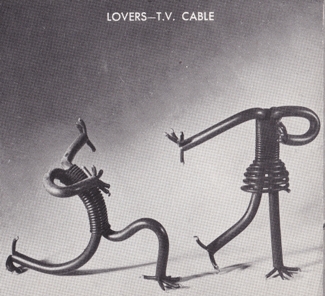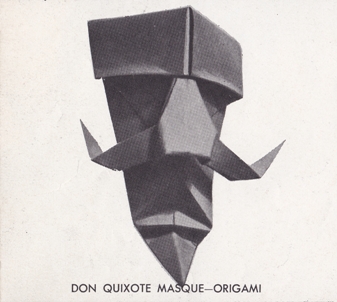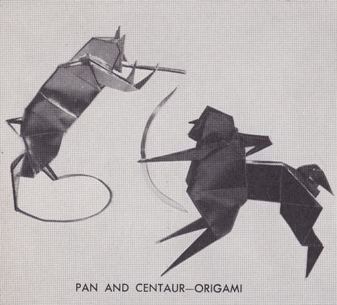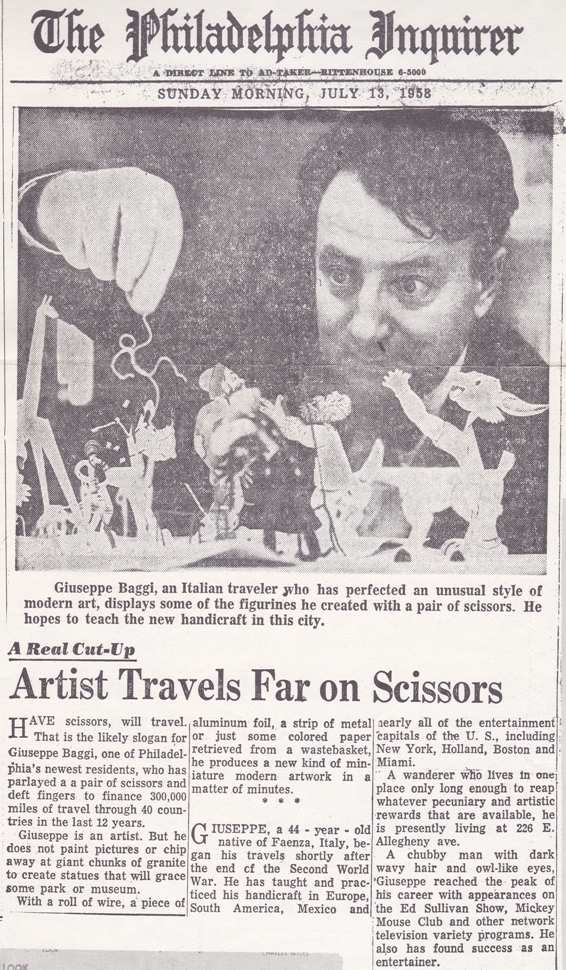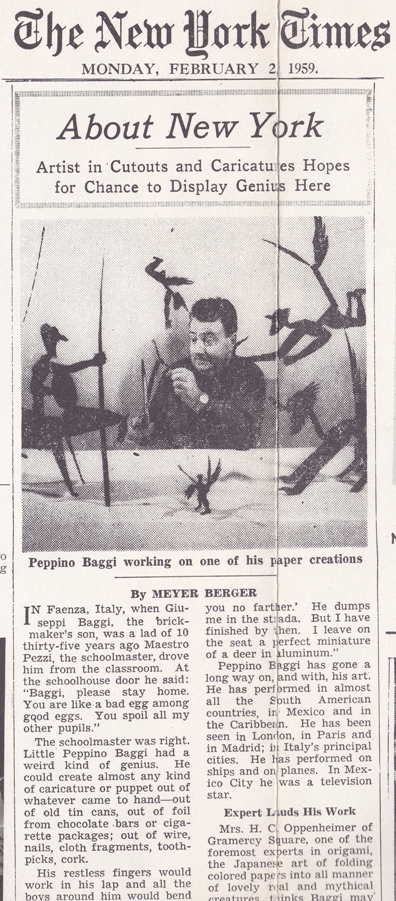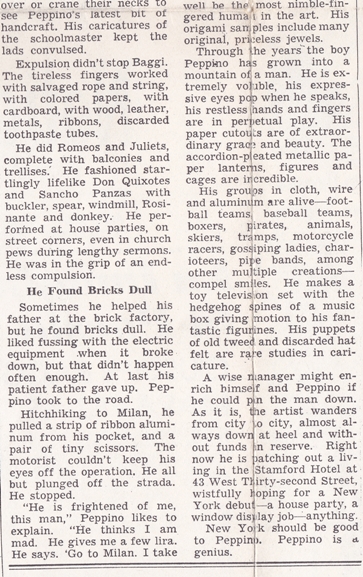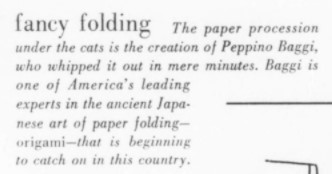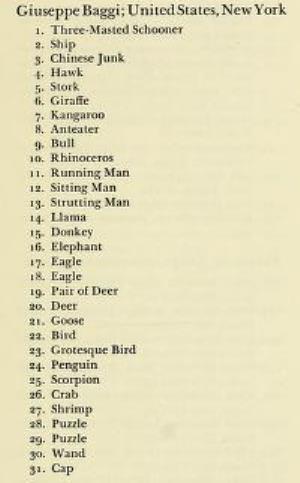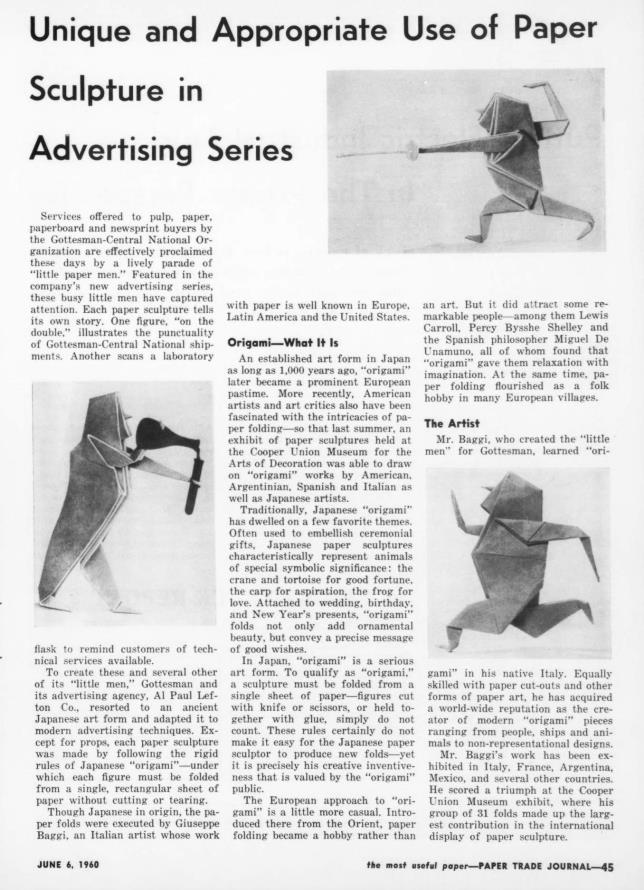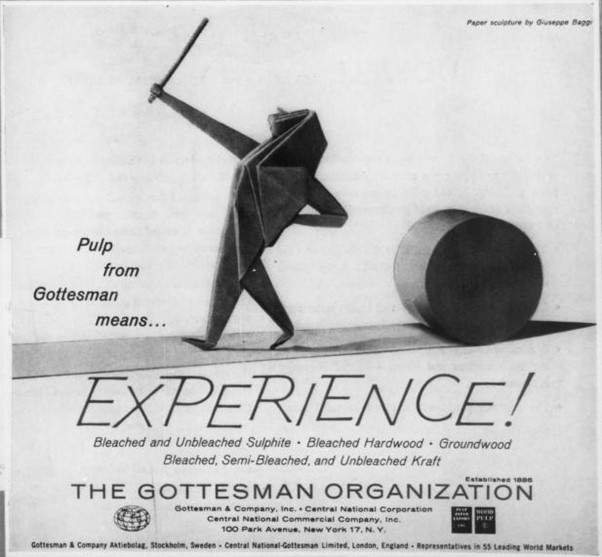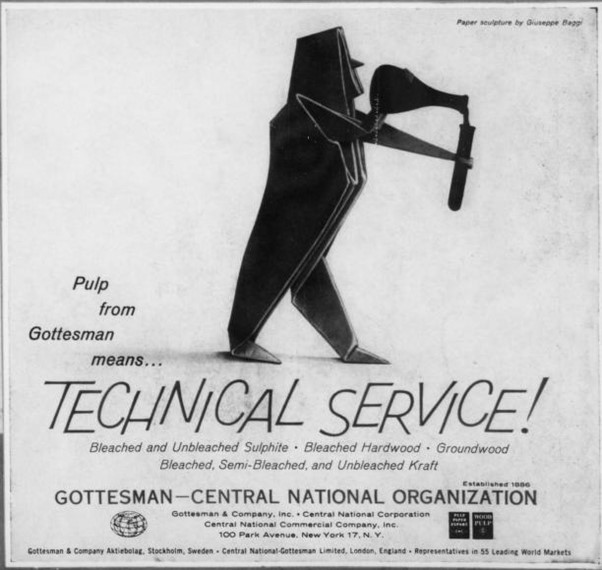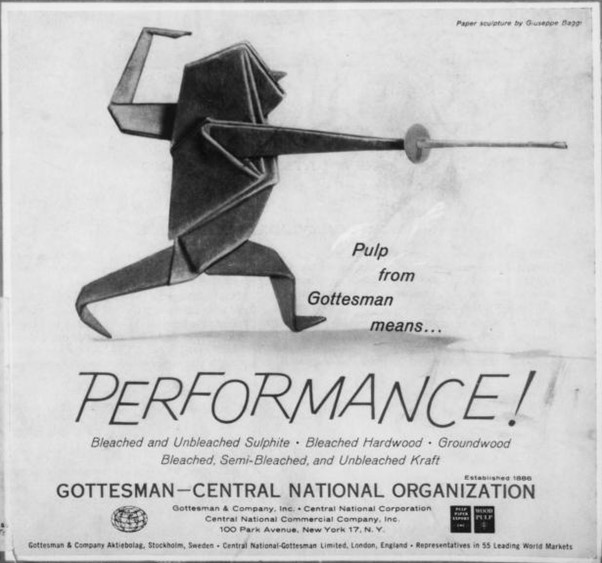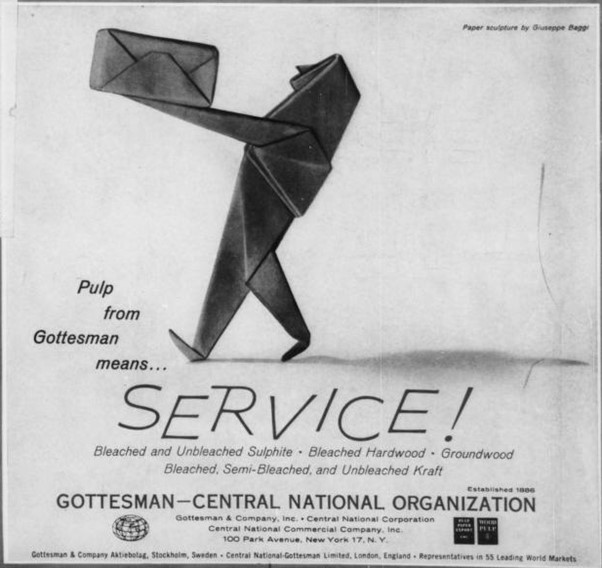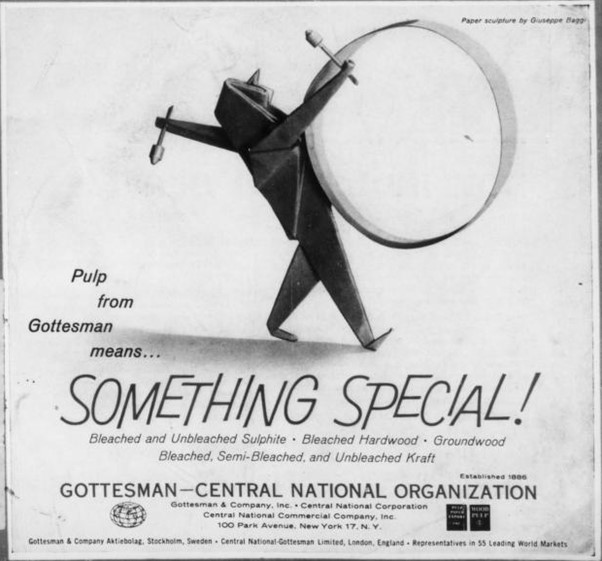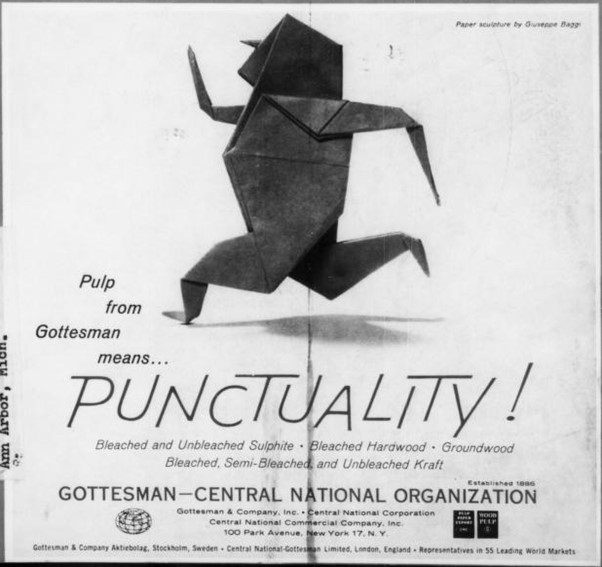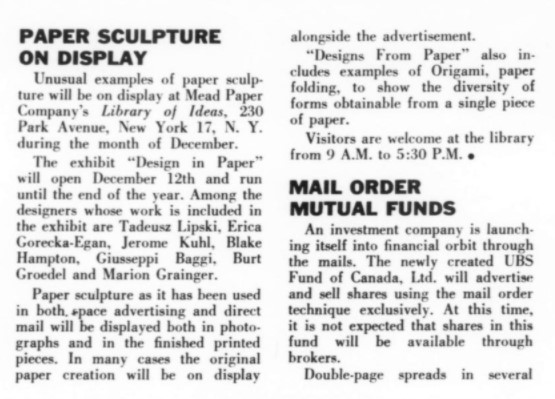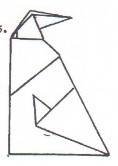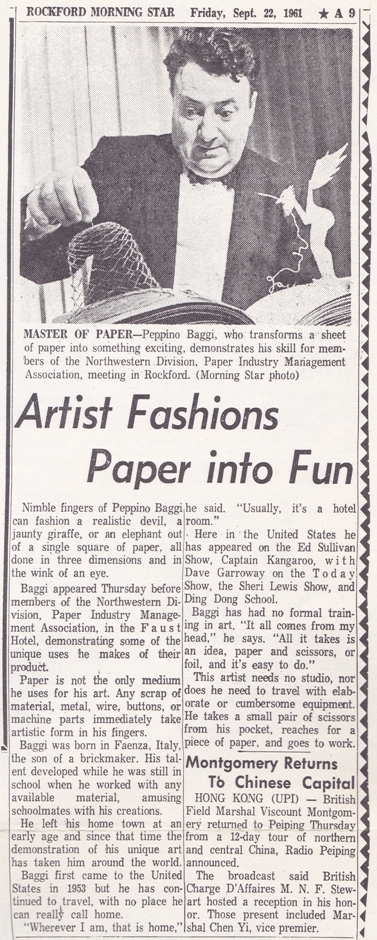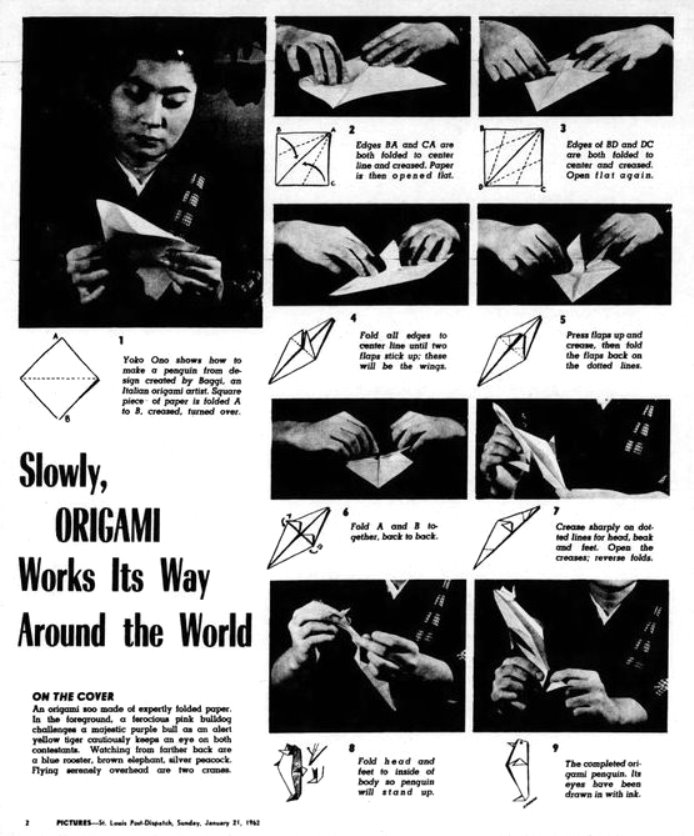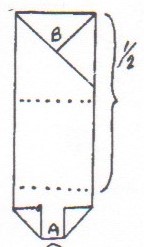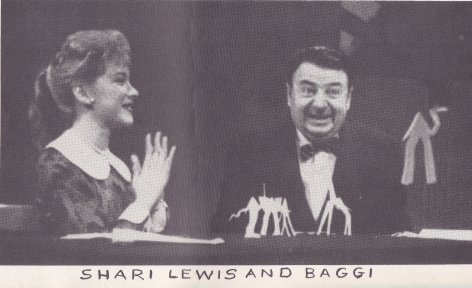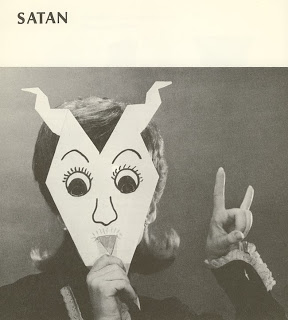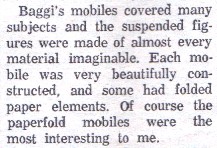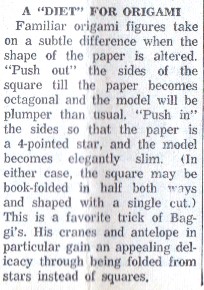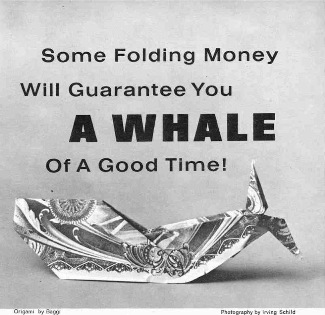| The Public Paperfolding History Project
x |
|||||||
| The Paperfolding of Giuseppe Baggi | |||||||
Introduction Giuseppe (Peppino) Baggi, was born in Faenza, Italy, probably in 1914, and died in Mexico City in 1972. As a young child he discovered a talent for making caricatures and comic sculptures out of scrap materials and turned this talent into a way of making a living, travelling around the world from city to city and seeking work entertaining in nightclubs, at trade shows and on TV etc. Here is what he said of himself in his promotional material:
********** Here are a few of his creations from wire and scrap materials which illustrate his talent:
********** At some point he learned about origami, experimented with it, and added it to his repertoire of creative skills.
********** Chronology 1914 Giuseppe (Peppino) Baggi, was born in Faenza, Italy, probably in 1914. ********** 1958 In July 1958 an article about Giuseppe Baggi appeared in the Philadelphia Enquirer:
** Giuseppe Baggi is listed in the Origamian Volume1, Issue 1 of October 1958 as having attended the inaugural meeting of the Origami Center on Monday 6th October 1958. In addition, the description of this meeting states, 'On exhibit were ... some original animal models by G. Baggi ...'. An account of the first evening meeting on October 20th, also states 'Giuseppe Baggi demonstrated some of his wizardry with paper and scissors'. *** Diagrams for a 'Santa Claus' design (from 3 squares with cuts) by Giuseppe Baggi appear in The Origamian Vol 1: Issue 3 of December 1958. ********** 1959 In February 1959 an article about Giuseppe Baggi appeared in the New York Times. Apart from Baggi, this article also mentions 'Mrs H C Oppenheimer of Gramercy Square, one of the foremost experts in origami ...' but there is no mention of paperfolding in relation to Baggi's own creations other than that 'his accordion-pleated metallic paper lanterns, figures and cages are incredible.'
********** Baggi was also mentioned in the 'Front Views and Profiles' column of the Chicago Daily Tribune of April 24th 1959.
********** Volume 23 Issue 14 of Look magazine of 7th July 1959 contained an illustration of some figures by Giuseppe Baggi.
********** According to the listing of exhibits in the catalogue, Baggi contributed 31 designs to the 'Plane Geometry and Fancy Figures' exhibition held at the Cooper Union Museum in New York in the Summer of 1959:
********** 1960 In 1960, possibly as a result of seeing his work at the Cooper Union exhibition, the Al Paul Lefton Advertising Agency contracted Baggi to make some paper figures for use in adverts for the paper pulp maker Gottesman-Central National Organisation. This was possibly the first time that origami designs had been featured in an advertising campaign of this kind. There were six advertisements in all. The June 1960 issue of the 'Paper Trade Journal' ran an article about the adverts (which featured on the front page in both previous and subsequent months, as well as in other journals such as 'Pulp and Paper').
It is worth mentioning that the claim in the final paragraph that 'his group of 31 folds made up the largest contribution' to the 'Plane Geometry and Fancy Figures' exhibition is untrue. Yoshizawa's contribution consisted of 43 figures. **********
*** In December 1960 Baggi participated in a 'Design in Paper' exhibition at Mead Paper Company's Library of Ideas, as repoerted in this article from The Reporter of Direct Mail Advertising, December 1960'
********** 1961 Vol 2: Issue 1 of 'The Origamian' for Summer 1961 contains a reprint of the New York Times article about Giuseppe Baggi by Meyer Berger. There is also a photo showing some of Baggi's designs for his little men, in various poses, and diagrams for a variation on the traditional Crane Envelope design. ********** Volume 2 Issue 2 of 'The Origamian' for Autumn 1961 contains diagrams for his Santa Claus.
********** In September 1961 an article about Giuseppe Baggi appeared in the Rockford Morning Star:
********** 1962 The St Louis Post Dispatch of 21 Jan 1962 contained an article about a Mrs Gordon of New York illustrated with pictures of Yoko Ono. In these step by step photos, taken from the article, Yoko is folding a penguin created by Baggi, which clearly raises the possibility that they may have been acquainted.
********** Volume 2 Issue 3 of 'The Origamian' for Spring / Summer 1962 contained diagrams for a Letterfold by Baggi.
********** 'The Origamiian' Vol 2: Issue 4 of Autumn 1962 mentions that 'Giuseppe Baggi also showed us his new base which is capable of producing thousands of animals and forms.' ********** 1963 Baggi's work was first used in a subscription advert by Mad magazine in April 1963, and regularly thereafter until September 1968, the last 10 adverts featuring origami designs folded from dollar bills. You can see these adverts here. ********** 1964 Vol 4: Issue 4 of 'The Origamian' for Winter 1964 contains a report on the Second Origami Convention by Alice Gray, which mentions some new designs taught by Baggi:
********** 1965 Baggi also created the (very simple) designs that featured in 'Folding Paper Masks' by Shari Lewis and Lillian Oppenheimer, which was published by Dutton in New York in 1965.
*** According to http://www.archivioceramica.com/CERAMISTI/B/Baggi Giuseppe.htm, in 1965 'Giuseppe Baggi, a versatile and singular artist ... won a scholarship in Faenza where, almost sixty years old, he approaches ceramics for the first time proposing his works in paper in clay (origami) applied to vases and sculptures.' ********** 1966 Volume 6, Issue 3 of 'The Origamian' for Autumn 1966 contains an article by Fred Rohm, 'On Mobiles', the extracts of which, below, mention Giuseppe Baggi:
********** Volume 6, Issue 4 of 'The Origamian' for Winter 1966 contains a brief article - author not stated - titled 'A 'Diet' for Origami', about the use of octagons and stars as starting shapes, which mentions Baggi..
********** 1968 Issues 110 of April 1967 to 115 and 117 to 121 of September 1968 of MAD Magazine included adverts for subscriptions to the magazine featuring origami designs folded from dollar bills. These designs were folded by, and in most cases probably also designed by, Giuseppi Baggi.
********** 1969 In September 1969 issue 129 of Mad Magazine featured a 'Mad Origami Zoo of Cliche Creatures', which were folded by, and many probably also designed by, Giuseppi Baggi, from media appropriate to the title of the design. ********** 1972 Giuseppe Baggi died in Mexico City in 1972. ********** 1999 In his 'Self-Designing Tetraflexagons', which can be found in 'The Mathemagician and Pied Puzzler, a collection in tribute to Martin Gardner', edited by Elwyn Berkelkamp and Tom Rodgers, and published by A R Peters in 1999, Robert Neale states, ' The first flexagon I saw that did not need glue (ie a non-twisted flexagon) was shown to me by Giuseppe Baggi years ago.' ********** |
|||||||
